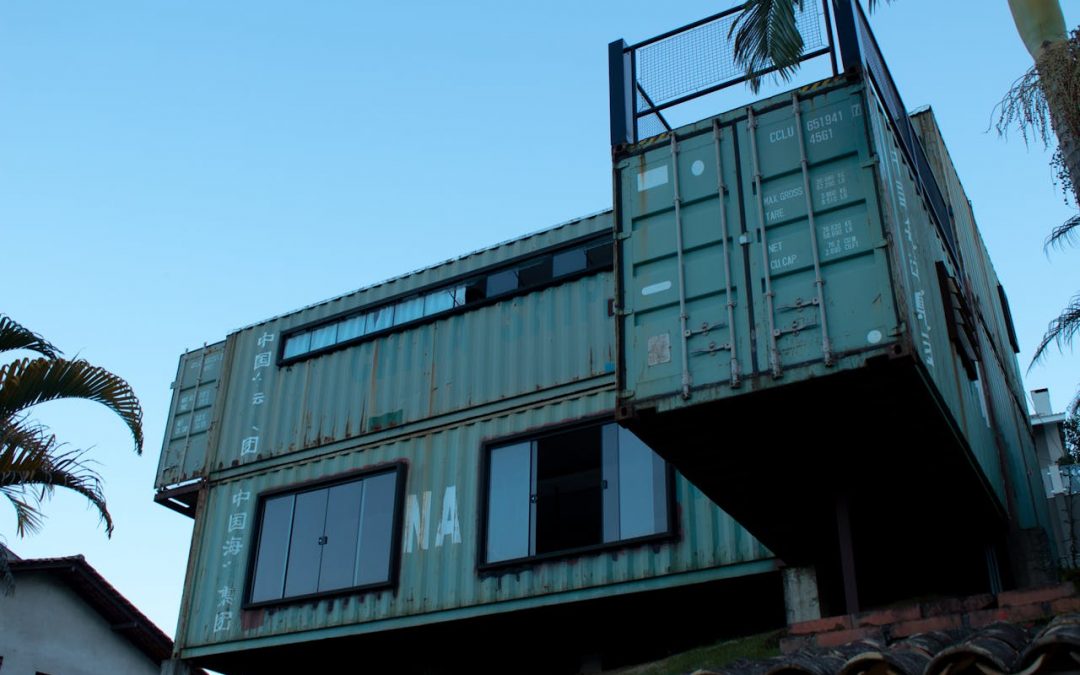The use of shipping containers is a revolutionary approach to building construction. Initially designed for transporting goods on ships, these rugged containers are now being repurposed into innovative and sustainable buildings. Their adaptability to various architectural needs has made them popular among designers searching for durable, eco-friendly, and cost-effective building solutions.
Durability and Versatility
One key benefit of using shipping containers in construction is their inherent durability. Engineered to endure harsh marine environments and to be stacked in high columns, these containers are built to last. This resilience makes them ideal for constructing both residential and commercial spaces that can withstand extreme weather conditions. Moreover, their versatility allows for creativity in design, enabling architects to craft unique spaces tailored to specific needs and aesthetics.
A Revolution in Building Design
Perhaps the most widely recognised application of shipping containers in architecture is their use in creating modern bars. The shipping container bar concept has gained popularity worldwide for its blend of industrial charm and sustainability. However, the use of shipping containers extends far beyond just commercial venues; they’re being creatively integrated into residential buildings, commercial spaces and education centres, offering a blend of modernity and efficiency.
Expedited Build Times
Another significant advantage of shipping containers is the expedited build time. Since the primary structure is already in place, construction involves modifying and joining containers to achieve the desired design. This process significantly reduces the time and labour typically required for traditional building methods, making it a cost-effective solution for rapid project completion.
Flexible and Sustainable Construction
Shipping containers offer unparalleled flexibility in design. They can serve as the primary building component for entirely new structures or be incorporated into existing buildings for additional space. This adaptability not only fosters innovative architectural designs but also promotes sustainability by repurposing steel containers that would otherwise be left unused.
Iconic Examples of Container Architecture
While specific examples like Stadium 974 in Qatar, Carroll House in Brooklyn, and the Porters’ Lodge at Cambridge University showcase the potential of shipping containers, the concept extends to countless projects around the globe. Each of these projects illustrates the versatility, durability, and aesthetic appeal of containers, whether standing alone or integrated with traditional construction materials.
- Stadium 974 in Qatar: Featuring a modular design composed entirely of shipping containers, Stadium 974 stands out as the first fully demountable stadium in FIFA World Cup history. It embodies innovation and sustainability in sports architecture.
- Carroll House in Brooklyn: This residential marvel in the US transforms shipping containers into luxury living spaces. Its unique design showcases an industrial aesthetic while providing a sustainable and modern urban home.
- Porters’ Lodge at Hughes Hall: Situated in one of Cambridge’s historic colleges in the UK, this Porters’ Lodge uses shipping containers to blend modernity with tradition. It offers a unique entrance that marries innovation with the university’s esteemed heritage.
Crafting Future Spaces
As we look to the future of construction, shipping containers offer a glimpse into the potential for more sustainable, efficient, and creative building practices. Their robust nature, ease of construction, and flexible design options position shipping containers as a cornerstone in the next wave of architectural innovation.

